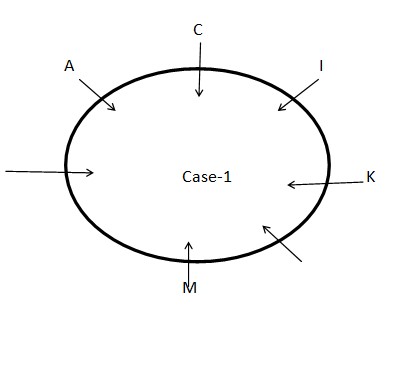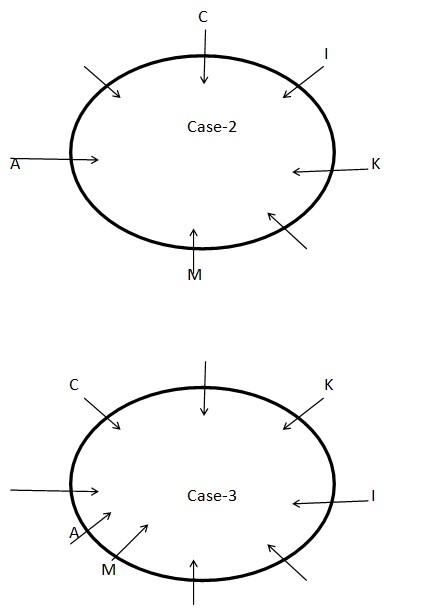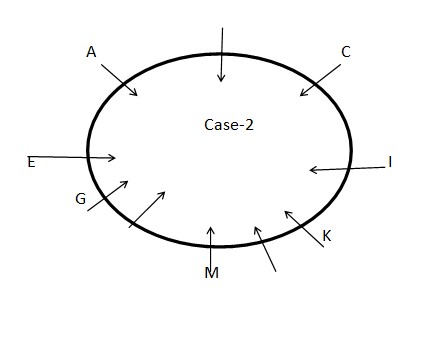Question
The number of persons sits between E and K is the same
as between I and _____, when counted from the right of both K and I? Study the following information carefully and answer the questions given below: A certain number of persons are sitting around the circular table. All of them are facing towards the center. Three persons sit between A and K who sits second to the left of C. E sits to the immediate left of G who sits second to the left of M. M sits third to the left of I who sits an immediate neighbour of K. Both E and A sit adjacent to each other. The number of persons sits between G and K is one less than the number of persons sits between K and E when counted from the right of both G and K respectively. At least one person sits between C and E when counted from the right of C.Solution
STEP I: M sits third to the left of I who sits an immediate neighbour of K. Three persons sit between A and K who sits second to the left of C. As per these statements, we can say that there are three possible cases and the arrangement will look like this: 
 STEP II: E sits to the immediate left of G who sits second to the left of M. Both E and A sit adjacent to each other. The number of persons sits between G and K is one less than the number of persons sits between K and E when counted from the right of both G and K respectively. At least one person sits between C and E when counted from the right of C. As per these statements, CASE I and CASE III get eliminated and we continue with CASE II and the final arrangement will look like this:
STEP II: E sits to the immediate left of G who sits second to the left of M. Both E and A sit adjacent to each other. The number of persons sits between G and K is one less than the number of persons sits between K and E when counted from the right of both G and K respectively. At least one person sits between C and E when counted from the right of C. As per these statements, CASE I and CASE III get eliminated and we continue with CASE II and the final arrangement will look like this: 
A system uses demand paging with an average page fault service time of 10 milliseconds and a memory access time of 100 nanoseconds. If the desired effec...
Which AI concept uses fitness functions to evolve solutions over time?
In cloud computing, what is the primary benefit of containerization compared to traditional virtualization?
Which of these is an open-source container orchestration platform?
Which is correct way to write methods in java?
Which of the following is NOT a data transformation activity?
A semaphore is initialized to 1. If two processes P1 and P2 both try to execute a `wait()` (P) operation on this semaphore, what is the maximum number o...
Which of the following is NOT part of CIA triad?
If receiver noise floor is 2 dB, signal-to-noise ratio is 3 dB then what is the receiver sensitivity?
How do you correctly create a new Map object in JavaScript?
Relevant for Exams:



